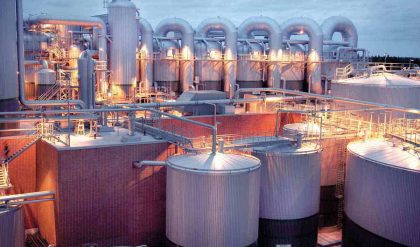We have various forms of energies such as kinetic energy (Ekin), potential energy (Epot), internal energy (U), work W, heat Q and so on. The conservation of energy provides us the approach, how one form is converted into another. Now let’s see two examples:
1. If we heat a cup of water up, then the temperature of water (or the internal energy) goes up. We say here, heat is transferred into water and its value is equal to the change in internal energy if a closed and rigid system (V=constant) is assumed.
2. We have a balloon which is filled with air. If we compress the balloon and its volume decreases, then the work done on this system (balloon) equals to the change in internal energy if this system is also assumed to be adiabatic (Q=0).
In both examples mentioned above the systems are stationary, that means the change in kinetic and potential energies are zero (ΔEkin=0, ΔEpot=0). Therefore, in this case, the total energy change during a process can be simplified and expressed as:
ΔEtot=ΔU=U2 – U1
Since additionally the system is closed, no mass flows and no energy transport across the boundary take place.
The general energy balance, or the 1st Law of thermodynamics, for closed systems can be expressed as:
ΔU=Q+W or Δu=q+w (per unit mass)
where:
o ΔU= the change in internal energy of this closed system
o Q= heat transferred.
o Q is positive when system absorbs heat
o Q is negative when system rejects heat
o W= work done on or by the system
o W is positive when the work is done on the system
o W is negative when the work is done by the system
This equation is available for reversible and irreversible processes, and indicates that both heat Q and work W lead to the change in internal energy of a closed system.
The first law of thermodynamics can also be written in differential form as:
dU=δQ+δW or du=δq+δw
„δ“ denotes the non-exact differentials. We notice that ΔU is path-independent even though Q and W depend on path.
Now let’s consider the reversible process:
In this case, work W in the equation involves only the moving boundary work (dW= – p(V)∙dV).
Hence we obtain the equation for reversible process:
dU=δQ – pdV or du=δq – pdν
Here it must be emphasized that even though the equation for 1.law of thermodynamics is derives from closed systems, it is also applicable to open systems.

